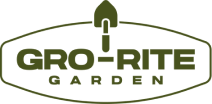Introduction:
In the world of sustainable gardening, the Hugelkultur method stands out as a time-tested technique that promotes both environmental health and robust plant growth. Today, we're diving into the art of filling your raised beds using the Hugelkultur approach, a practice rooted in centuries-old wisdom. Get ready to transform your garden beds into thriving ecosystems with a step-by-step guide featuring distinct layers that make up the Hugelkultur magic.
The Hugelkultur Layers:
1. 40% Logs: Building the Foundation
- Begin by laying down a sturdy foundation of logs, constituting 40% of the total bed. This layer provides structure to the mound and acts as a reservoir for moisture.
2. 20% Sticks and Branches: Layering the Framework
- The next layer involves adding sticks and smaller branches, contributing to the framework of the Hugelkultur bed. This layer ensures optimal aeration and further enhances water retention.
3. 25% Vegetation and Plant Waste: Nourishing the Soil
- Introduce a layer of vegetation and plant waste, comprising 25% of the bed. This can include leaves, garden debris, and other organic matter. As this layer decomposes, it releases valuable nutrients into the soil.
4. 10% Compost: Boosting Nutrient Levels
- Layer in 10% compost, providing an immediate nutrient boost to your garden. Compost enriches the soil and accelerates the decomposition process, fostering a nutrient-rich environment for plant growth.
5. 5% Topsoil: Finalizing the Planting Surface
- Complete the Hugelkultur mound with a top layer of quality topsoil, making up the final 5%. This layer serves as the immediate planting surface for your garden, offering the perfect environment for seeds or transplants.
Benefits of Hugelkultur:
-
Water Retention: The layered structure retains water effectively, reducing the need for frequent irrigation.
-
Nutrient-Rich Soil: As organic matter decomposes, it releases nutrients, creating a fertile soil environment.
-
Sustainability: Hugelkultur beds require minimal maintenance and promote long-term soil health.
Conclusion:
Embark on your journey to a flourishing garden by embracing the Hugelkultur method. The strategic layering of logs, sticks, vegetation, compost, and topsoil creates a self-sustaining ecosystem that nurtures your plants and minimizes environmental impact. Elevate your gardening experience with this centuries-old technique, and watch as your garden thrives in harmony with nature. Happy gardening!

